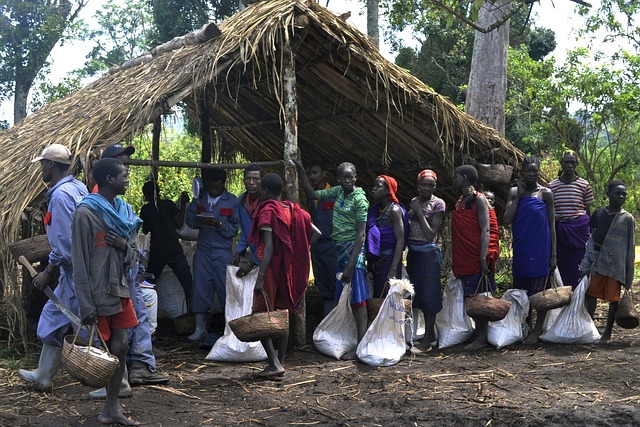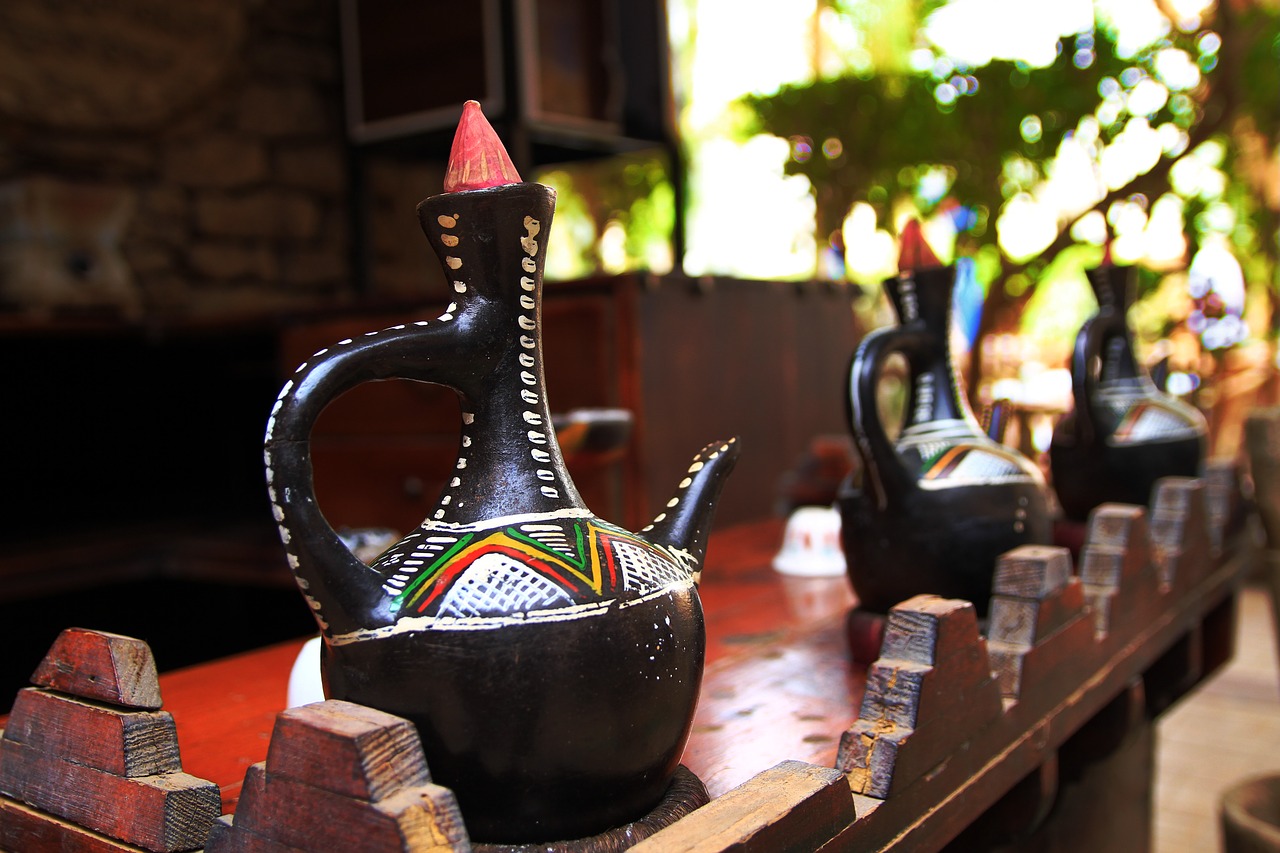Climate Change and Coffee
How a Global Coffee Crisis May Be Averted
By Natasha Bourlin
Across the globe, the term “climate change” has become quite controversial. Few industries are as directly impacted by the possibilities and realities of climate change than farming, and Arabica coffee farmers are feeling the pressure, particularly in Ethiopia, the birthplace of the beloved bean.
Ethiopia’s dramatic biodiversity has spurned coffee growth for millennia. The origin of the word coffee is derived from the Kaffa region of the country. It’s said that intentional cultivation and consumption of coffee began in the 9th century with an Abyssinian goatherd named Kaldi. He saw his herd energized after ingesting the prevalent red berries grown on bushes in the area, so he tried a few himself and felt elated.
Taking the berries to a nearby monastery, the monks deemed them the work of the devil and proceeded to throw them into a fire. Soon, the monastery filled with an intoxicating aroma as the beans roasted. Other monks came to inspect the fragrance’s source. Beans were extracted from the fire and doused with water, creating a beverage that monks drank to keep them awake during their lengthy evening devotions. And the rest is history.
That original species of Arabica has traversed the Earth since its discovery centuries ago and modified by farmers and scientists a plethora of times since. Now considered an heirloom varietal, coffee producers on various continents often seek out the original Ethiopian strains to help remedy tainted crops. But what will happen if current climate changes adversely affect their remedy?
We could be looking at a global coffee crisis.

What is Climate Change?
Scientists have been studying the causes and effects of purported climate change for decades. A report found on Climate.nasa.gov states, “Most climate scientists agree the main cause of the current global warming trend is human expansion of the ‘greenhouse effect’ — warming that results when the atmosphere traps heat radiating from Earth toward space. Certain gases in the atmosphere block heat from escaping. Long-lived gases that remain semi-permanently in the atmosphere and do not respond physically or chemically to changes in temperature are described as ‘forcing’ climate change.”
Gases contributing to climate change, according to the same report, include
nitrous oxide, carbon dioxide, methane and water vapor. These are produced naturally, and in various terrestrial industries and agricultural endeavors.
According to National Geographic, “Greenhouse gases let the sun’s light shine onto the Earth’s surface, but they trap the heat that reflects back up into the atmosphere. In this way, they act like the glass walls of a greenhouse. This greenhouse effect keeps the Earth warm enough to sustain life. Scientists say that without the greenhouse effect, the average temperature of the Earth would drop from 14˚C (57˚F) to as low as –18˚C (–0.4˚F).
“Some greenhouse gases come from natural sources. Evaporation adds water vapor to the atmosphere. Animals and plants release carbon dioxide when they respire, or breathe. Methane is released naturally from some low-oxygen environments, such as swamps. Nitrous oxide is produced by certain processes in soil and water. Volcanoes—both on land and under the ocean—release greenhouse gases, so periods of high volcanic activity tend to be warmer.”
How is Coffee Production Affected?
Arabica-producing countries are largely found along the equator in subtropical regions and those with high rainfall. Climate directly impacts the flavors developed within coffee beans. In his book The World Atlas of Coffee, author James Hoffman shares that on the tree is where coffee’s flavor peaks, and that the goal of processing is to preserve that quality.
When climates shift, it directly impacts the long-instilled expectations farmers have of when to plant and harvest their crops and in what seasons they will thrive. The areas in which they plant as well as their yields are impacted, as are the flavors produced in the beans, when temperatures rise and droughts afflict regions.
Here we’ll use Ethiopia as an example, because it is the origin of all coffee beans. Climate change there has already been catching the eye of industry experts, as seen in this 2017 story entitled Climate Change Will Be Disastrous to Ethiopian Coffee Sector Without intervention, Research Shows on Dailycoffeenews.com.
A multitude of coffees are grown in three areas of Ethiopia: The Rift Valley, and the areas east and west of the valley. Forest (shade) coffee and sun coffee (little to no shade) are the two main production systems there, and crops are planted typically where water can be easily diverted to irrigate crops. Pesticides and fungicides are rarely used, making Ethiopian coffee typically exceed the organic certification standards we’re familiar with.
As seen in a U.S. National Library of Medicine report, “Indigenous Arabica plays a key role in coffee production in Ethiopia [4] and has an intrinsic value as the storehouse of wild coffee genetic resources, with an estimated value to the coffee industry of 0.5 to 1.5 billion US$ per year . . . The stated optimum mean annual temperature range for Arabica is 18–21°C [3], or up to 24°C [4]. At temperatures above 23°C, development and ripening of fruits are accelerated, often leading to the loss of beverage quality [5] . . .”
A worldwide danger to coffee crops, the Hypothenemus hampei, likely originating in central Africa, bores into coffee berries and seems to thrive in warm conditions. The pest has spread to the majority of coffee-producing regions the world over, with the exception of a couple of Asian areas. Reports say damage from this pest is responsible for over $500 million in losses annually. Fungal infections also result from increased temperatures and rainfall.
In-depth specifics on the entire Ethiopian climate change crisis as it relates to the coffee industry are also found in this 2017 Researchgate.net report. The country’s mean annual temperate has increased by 1.3 degrees Celsius, from 1960-2006. Hot days and nights have increased while cool days and nights have decreased. Overall rainfall has also been reduced by 10% between 1948-2006 across the country. These factors all impact coffee crops.
Coffee farmers interviewed during a field study between 2013-2016 claim weather patterns are now more variable, and uncertainty in yearly weather patterns has increased, as with the reliability of rainfall and onset of wet season.
Drought and heat have been attributed to increased plant death and stress. Environmental stresses can influence coffee growth through slight physiological distress, which is gauged by scientific devices, and obvious physical distress such as leaves wilting or death of the plant. During prolonged droughts, there is often a reduction in bean size and malformations. These changes, even small ones, can adversely affect coffee yield, quality and its price.

A Coffee Roaster’s Perspective
Owner and roaster of Wood-Fire Roasted Coffee Tim Curry has seen a difference in some his longtime favorite beans over the past decade. He’s been using Ethiopian beans, primarily Yirgacheffe from various producers, since embarking on his roasting career more than 17 years ago.
From crop year to crop year, he’s been seeing extremes, not consistency, as he relied on in the past.
“Quality overall has been slipping,” Curry shares. “I don’t know if it’s the microlots, handling or the seeds, but getting consistently great Ethiopian coffees has been more difficult over the past 10 years.”

He says there should be very little fluctuation from crop year to crop year with Ethiopian coffees, it’s one of the reasons he purchases beans from the region. Not limited to Ethiopia, Curry is quite familiar with African coffees, his Kenya Nyeri AB Gichatha-ini Signature Series having earned a rare 97 points from Coffee Review in 2011. He is acutely aware of even subtle differences in the beans he roasts for his customers.
Classic characteristics of Ethiopian coffees are lemon, honey and black tea with earthy notes. They’re generally sweeter and smoother, with no bitterness and touches of tannic black tea. Fluctuations in character are normal, Curry explains. Sometimes they’re brighter with lively citrus playing on the taste buds prominently. Sometimes flavor profiles are more earthy. But he’s seeing far more consistency extremes in his Ethiopian orders. For example, this year the lemon and black tea profiles were more muted.
He believes that the climate there is becoming more volatile, and that’s being reflected in the coffee.
What’s the Remedy?
Coffee farming provides the main source of income for approximately 15 million Ethiopians. Decrease in quality and health of this crop could prove economically devastating for the African country, not to mention global coffee growers reliant upon Ethiopian heirloom plants to help their own in times of crop crisis.
Unfortunately, coffee plants are notoriously sensitive to environmental changes. Finding solutions like shifting crops further uphill to cooler areas is critical. Hand harvesting, often seen in microlots, is optimal for coffee quality as those cultivating the beans pick only the ripe ones. Machines that do the picking on larger lots aren’t as discriminating.
Shifting crops to higher elevations to help them cope is one of the solutions for Ethiopian coffee producers. A recent study led by spatial analyst for the Royal Botanic Gardens Kew Justin Moat
used existing data, computer modeling and projections to forecast the fate of Ethiopian coffee farms. The study states that, “regardless of interventions, one of the country‘s best known coffee-growing regions — Harar, in eastern Ethiopia — is likely to disappear before the end of the century.”
The same report shares that professor of chemistry at the University of Nairobi’s Institute for Climate Change Adaptation, Kenya, Shem Wandiga says “that although the study cannot predict with full certainty, it holds important messages for policymakers.”
“Start planning to expand coffee growing areas to higher elevation,” he suggests. “The expansion should be coupled with forestation of the areas.”
No one wants the treasured and delicious caffeinated bean to suffer, as we all will as a result. Our part is to help decrease greenhouse gasses, therefore lessening the greenhouse effect that impacts climate change, while the fate of the primordial coffee region’s crops are in the hands of Ethiopian farmers.
Meanwhile, coffee roasters like Tim Curry will continue to craft exceptional coffees with the products they’re able to source.
Thank you Natasha Bourlin of Passport and Plume for the wonderful work on this post.
Photo credit: 1) ningxin23minor from Pixabay
2) Ammar Hreib from Pixabay
3) Mayra Santiago


